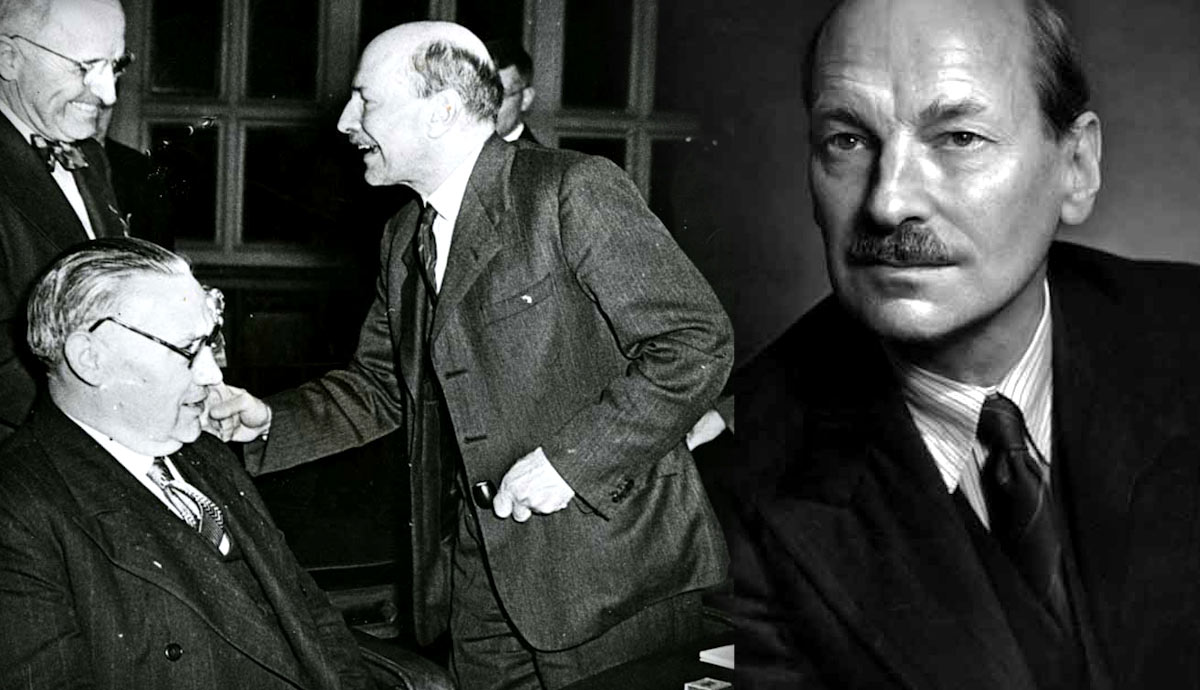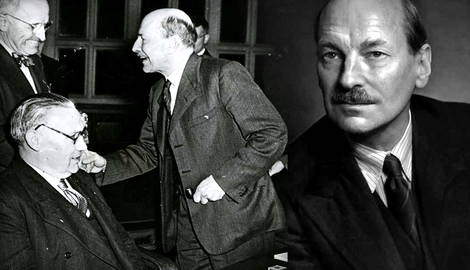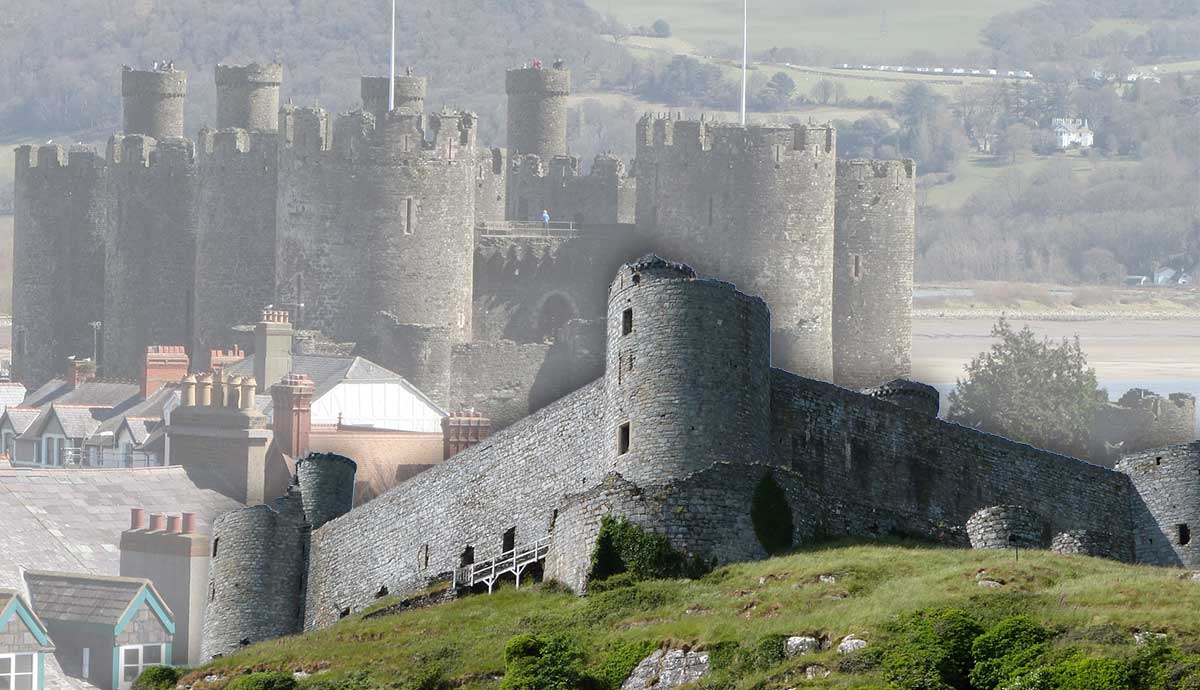
Those interested in British politics enjoy pitting certain politicians against each other, comparing and contrasting the most impressive individuals from our past. When it comes to the question of Britain’s best prime minister, it’s hard to come up with an objectively correct answer. Yet some names certainly come up more than others during these discussions.
Clement Attlee is one of these names. As the leader of the Labour Party, he won an impressive election victory in 1945 and remained in power until 1951. Though far from perfect, his tenure as prime minister proved to be a political milestone, and many consider Attlee to be one of the greatest politicians in British history.
Clement Attlee’s Upbringing

Clement Attlee was born on January 3, 1883, in the village of Putney, an area that is now part of London. At the time, the Liberal Party was in power, and William Gladstone was in the middle of his second term as prime minister. The Conservative Party was the other main force in British politics. The Labour Party, on the other hand, hadn’t been created yet.
Being the seventh child and fourth boy, Attlee grew up in a large, religious family fronted by a wealthy father who worked as a solicitor. He was an intelligent child who liked reading books and poetry. He particularly enjoyed the work of Alfred Tennyson.
Attlee started preparatory school at the age of nine before moving on to Haileybury as a teenager. The school was a prestigious institution with idyllic grounds and an impressive reputation. Prospective students had to pass an entrance exam and have wealthy parents if they wanted to study there.
Attlee didn’t stand out from the crowd at Haileybury despite his early signs of intelligence. He was an adequate (but unexceptional) student, though his love of language and written communication remained, for he was a member of both the College Literary Society and the Shakespeare Society.
Like his older brothers, Attlee went on to study at Oxford University. He studied Modern History, specializing in the Italian Renaissance. He was also a member of the debating society during his time at Oxford.
The Dawn of a Political Career

The Labour movement came into being towards the end of the Victorian era. A Scottish politician named Keir Hardie formed the Independent Labour Party in 1893 and the Labour Party in 1900.
Meanwhile, Clement Attlee was looking for a career change after disliking his work at his father’s law firm. His heart simply wasn’t in it, and he craved a greater sense of purpose.
In October 1905, Attlee went for a walk in Stepney in the East End of London with his brother Lawrence. They found a culture of poverty, poor housing, and insecure unemployment. This had a profound impact on Attlee’s view of the world, shattering the notion that individual failings and idleness were the source of poverty. Attlee offered his services to a charity in Stepney and helped working-class boys in the area.
Politically, Attlee wasn’t impressed with either the Conservative Party or the Liberal Party. The latter had won the 1906 election with a landslide victory and were embarking on an agenda of redistributive taxation and welfare reforms. But Attlee didn’t believe these reforms went far enough.
In January 1908, Attlee joined the Stepney branch of the Independent Labour Party. This was his springboard into the wider London socialist movement, and he soon established himself as a hard worker.
However, the party had little electoral success in the early years of the twentieth century. Even in working-class areas, it was hard to break the two-party stronghold of the Liberals and Conservatives.
Following the start of the First World War, Attlee joined the army in September 1914 and put his political career on hold. In April 1917, he suffered severe shrapnel wounds in Iraq, and in August 1918, he was hit by a piece of timber while being shelled in France. Thankfully, none of these injuries were life-threatening.
The Rise of the Labour Party

When Clement Attlee returned from the army in January 1919, he found a new political landscape.
Before the war, only sixty percent of men could vote. After the war, all men and most women over the age of thirty could vote. Trade union membership also increased during the war years. These factors gave the Labour Party a boost.
After the collapse of David Lloyd George’s coalition government in October 1922, there was a general election in November. The Labour Party made significant progress, winning 142 seats and performing particularly well in working-class areas. Attlee himself became a Member of Parliament for the constituency of Limehouse in Stepney.
Though the Conservatives managed to win the next election in December 1923, they didn’t have a majority in the House of Commons, resulting in a hung Parliament. Labour, as the second-largest party, formed a coalition with the Liberals, enabling them to command a majority in the House of Commons. Ramsay MacDonald became the first Labour prime minister.
While the coalition didn’t last long (the Conservatives returned to power in October 1924 with a big majority), Labour’s time in power solidified them as a serious force in British politics. Their success continued in May 1929 when they became the largest parliamentary party for the first time.
However, they lacked the numbers they needed, and it would be many years before a governing Labour Party secured a majority on their own.
The War Cabinet

Clement Attlee became leader of the Labour Party in December 1935. Under his direction, the party published Labour’s Immediate Programme (1937), clarifying his vision for what Britain would look like under a Labour government. The document included the nationalization of power and transport industries.
But there were bigger issues facing Britain (and the world) at this time. The growing threat of the Nazis during the 1930s developed into a global conflict when Germany invaded Poland on September 1, 1939. Though Attlee supported Britain’s involvement in the war, he disliked the current Conservative prime minister, Neville Chamberlain.
Winston Churchill replaced Chamberlain in May 1940. Though Churchill held conservative beliefs, he had a lot of respect for Attlee and gave him several ministerial positions in the coalition government during the Second World War. The most prestigious position held by Attlee was that of Deputy Prime Minister. This required Attlee to chair Cabinet meetings when Churchill was on military trips abroad.
(Other Labour politicians also played important roles in the coalition government. Herbert Morrison, for example, was the Home Secretary during the Second World War.)
Clement Attlee’s Time as Prime Minister

Following Adolf Hitler’s suicide and the Russian victory at the Battle of Berlin, the six-year conflict in Europe came to an end. Soon after, Britain held a general election, and Clement Attlee’s Labour Party scored a comfortable majority, taking 393 seats in the House of Commons.
Attlee had developed a firm grasp of administration and management during his political career, essential skills for any prime minister.
When it came to foreign affairs, Attlee’s government oversaw Britain’s withdrawal from South East Asia, marking the shift from empire to Commonwealth with the independence of India (1947), Pakistan (1947), Burma (1948), and Ceylon (1948).
Attlee also had to face the early stages of the Cold War. Well aware of the threat posed by the Soviet Union, he made sure Britain signed up to the North Atlantic Treaty Organization, better known as NATO. In 1950, he traveled to Washington and spoke with the President of the United States, Harry S. Truman, about the Korean War and helped to prevent the use of nuclear weapons.
Domestically, socialist principles influenced Attlee’s management of the economy. The government made efforts to standardize working conditions, empower trade unions, and nationalize industries like coal, steel, mining, and the railways.
Yet Attlee’s greatest long-term achievement was the creation of Britain’s National Health Service (commonly referred to as the NHS). The health service came into effect in the summer of 1948 and gave free healthcare by removing fees or insurance premiums.
Attlee’s time in office also saw the creation of Areas of Outstanding Natural Beauty and a more comprehensive childcare service, with the latter helping to provide care for impoverished and orphaned children.
Clement Attlee’s Legacy

Debates concerning Britain’s greatest prime minister—as fascinating as they might be—can often get heated among those with an interest in British history. Political biases naturally come to the fore, with some refusing to acknowledge the flaws of Clement Attlee’s premiership.
The biggest red flag against Attlee’s legacy is the brevity of his time in government. Having put most of its pledges into practice, the Labour Party lacked the sense of excitement that had been key to the party’s success in 1945. This allowed Winston Churchill’s Conservative Party to emerge victorious in the 1951 election.

Moreover, the nationalization schemes implemented by Attlee’s government had a short shelf life and were largely undone by Margaret Thatcher’s Conservative Party several decades later. It’s important to acknowledge these shortcomings and stress that Attlee was far from a perfect prime minister.
Nevertheless, Attlee still deserves credit for the changes his party carried out, both at home and abroad. The creation of the National Health Service proved Attlee was a politician ahead of his time. This, along with the shift from empire to Commonwealth and Britain’s decision to join NATO, helped to solidify his legacy.
Regardless of your own political biases, it’s hard not to commend the achievements of Attlee’s Labour government.










